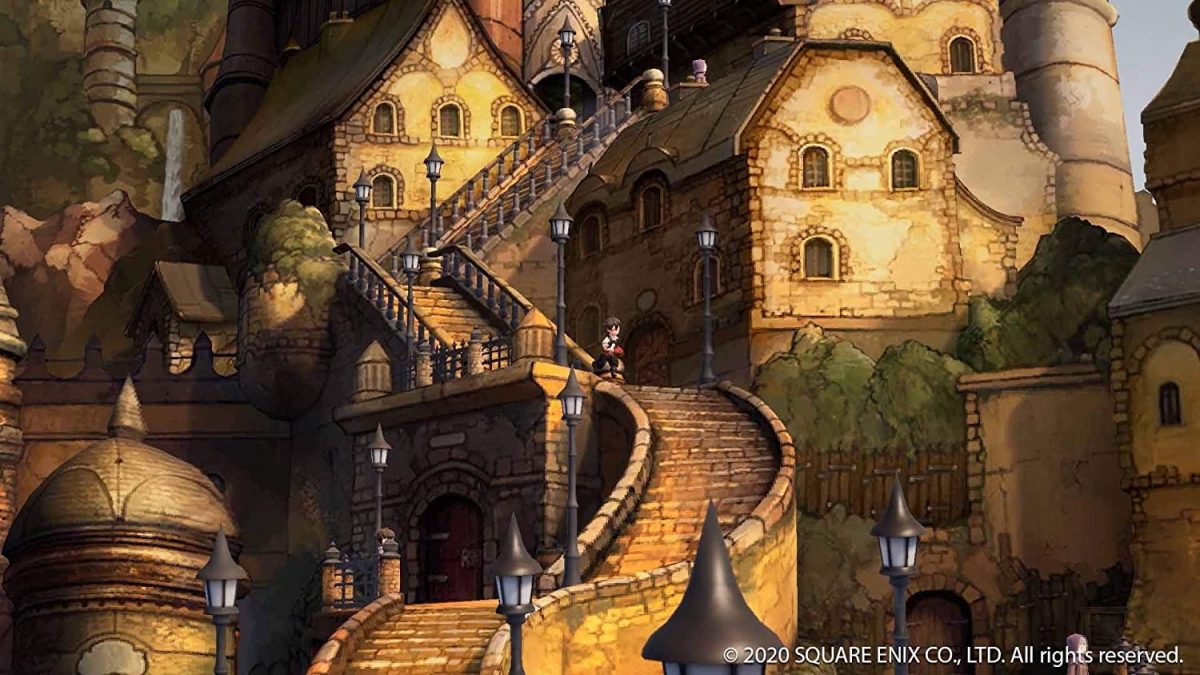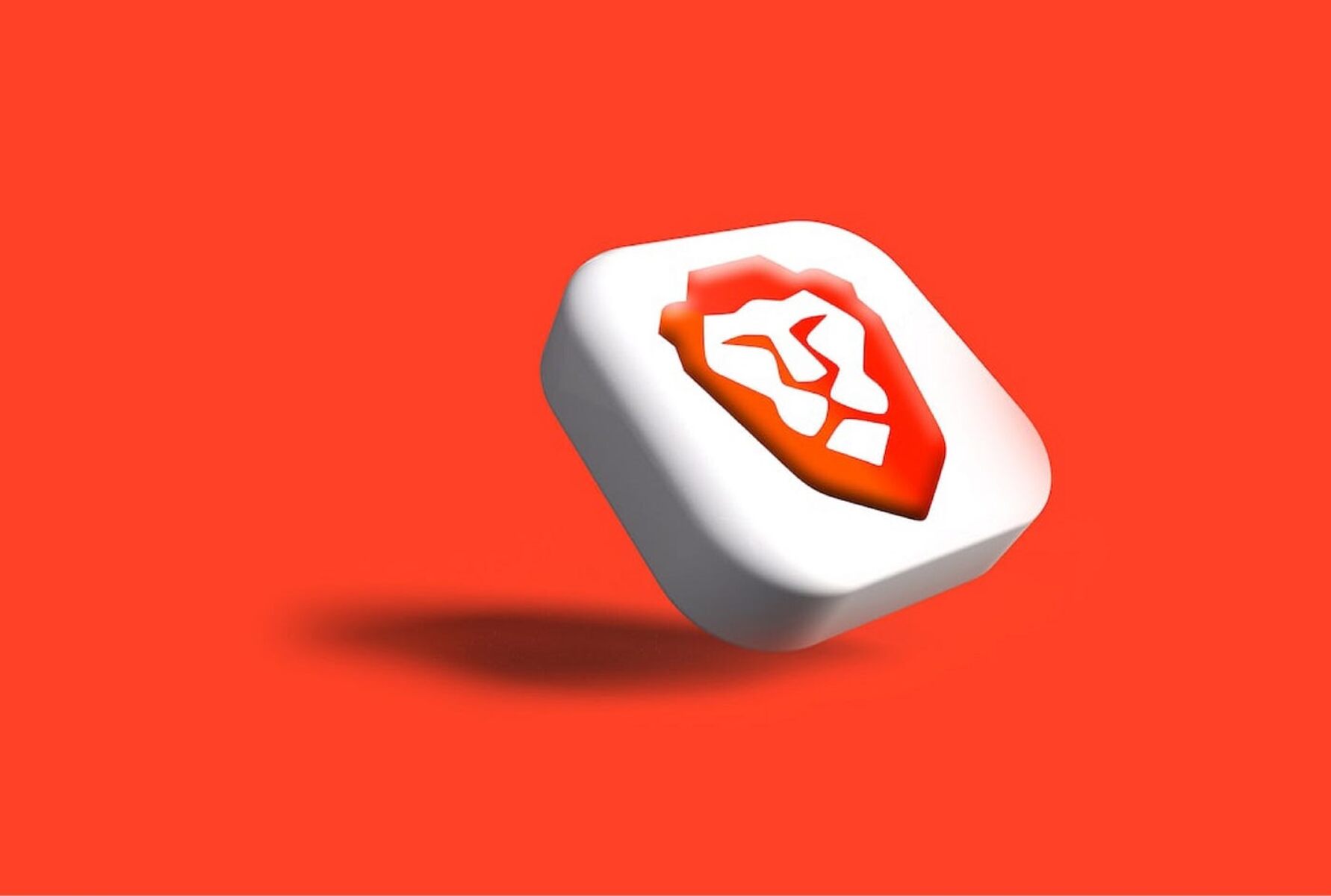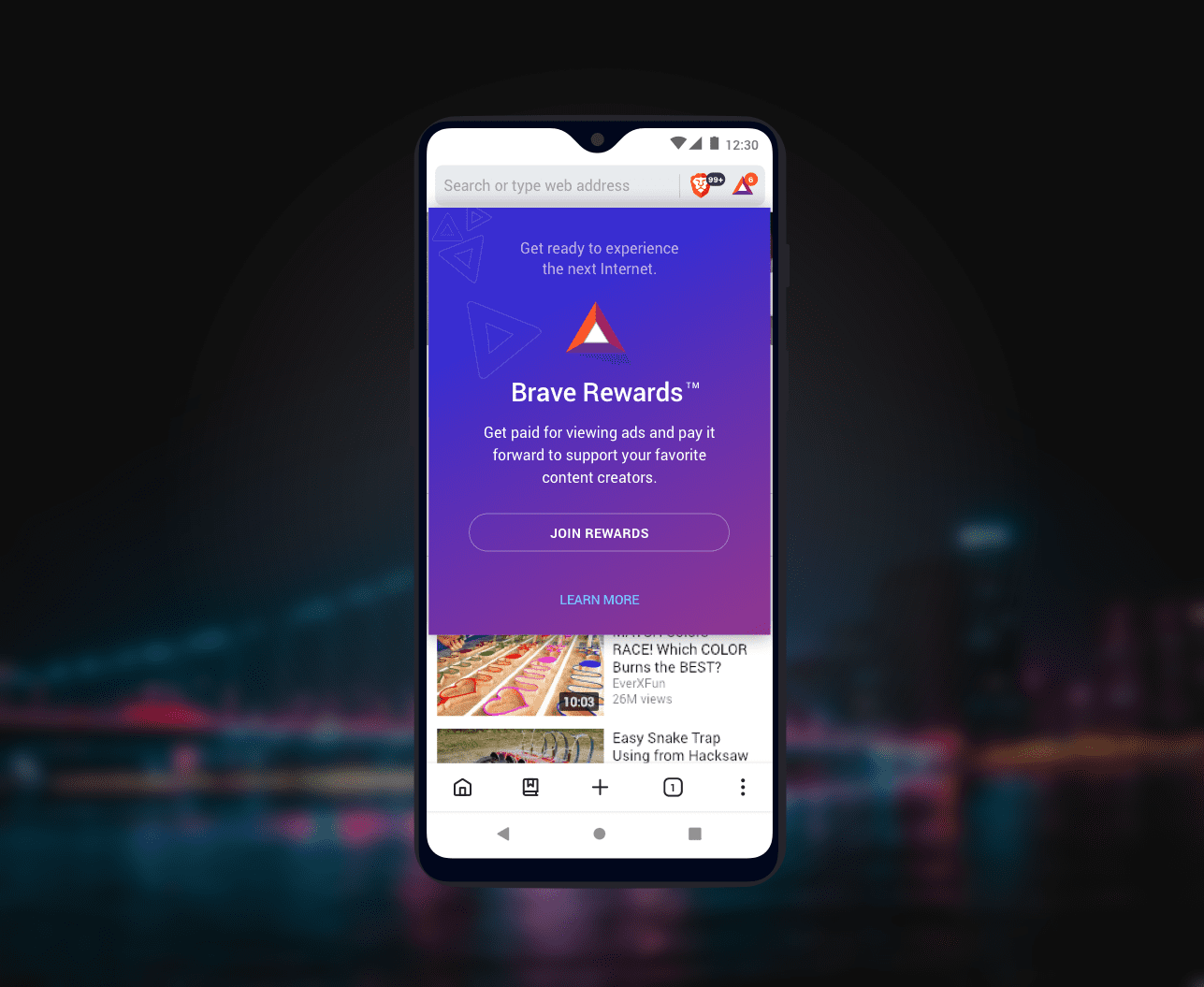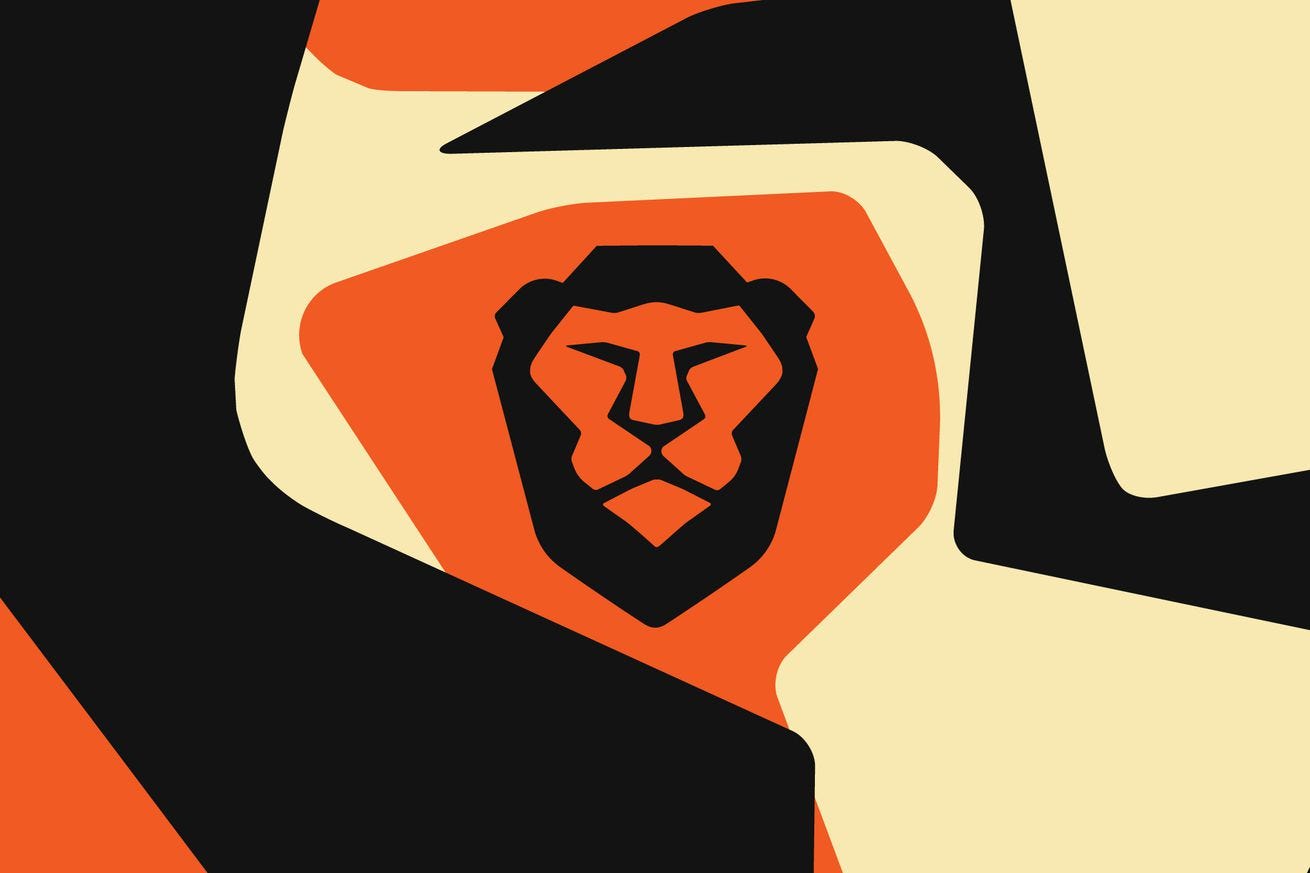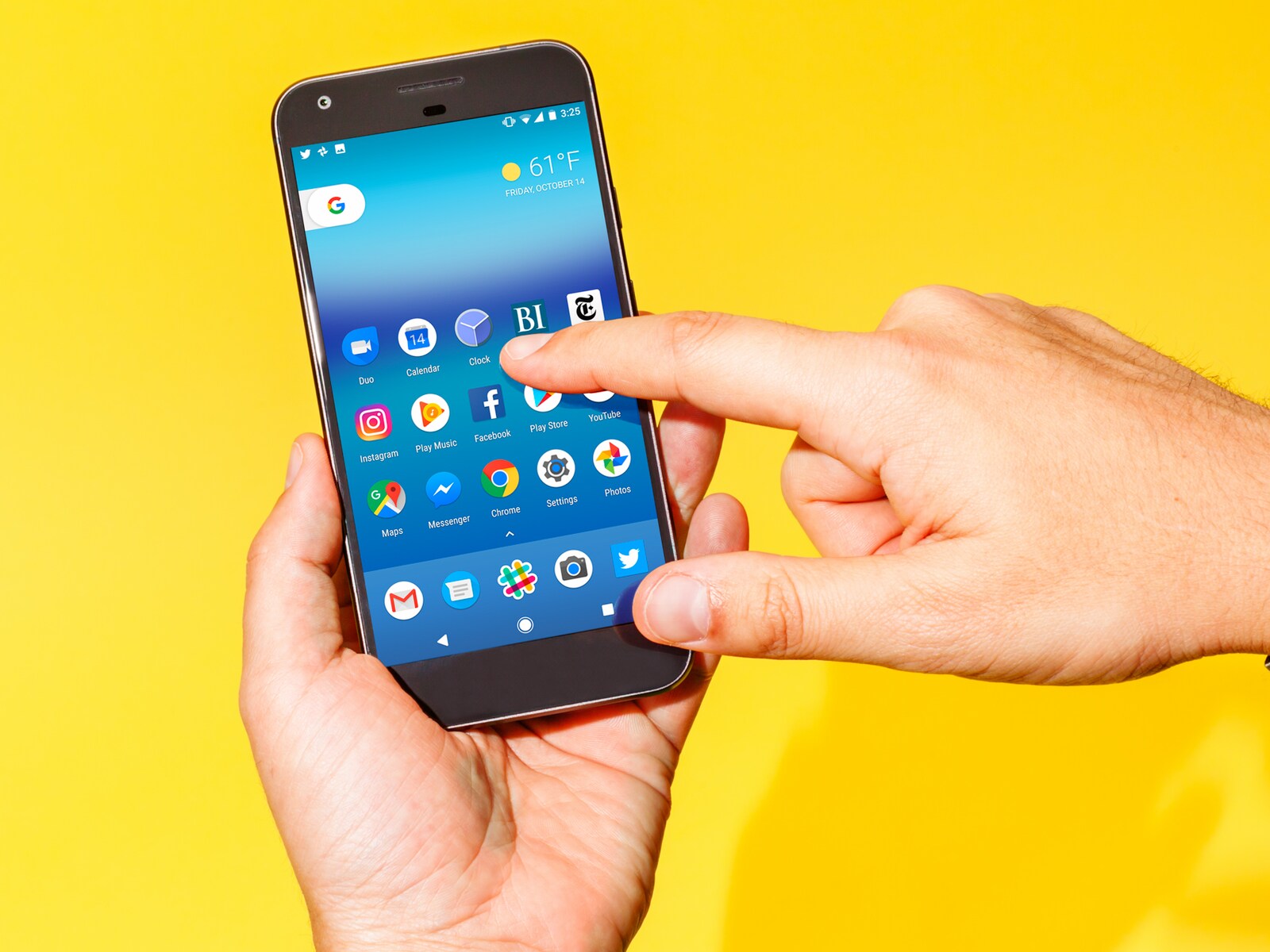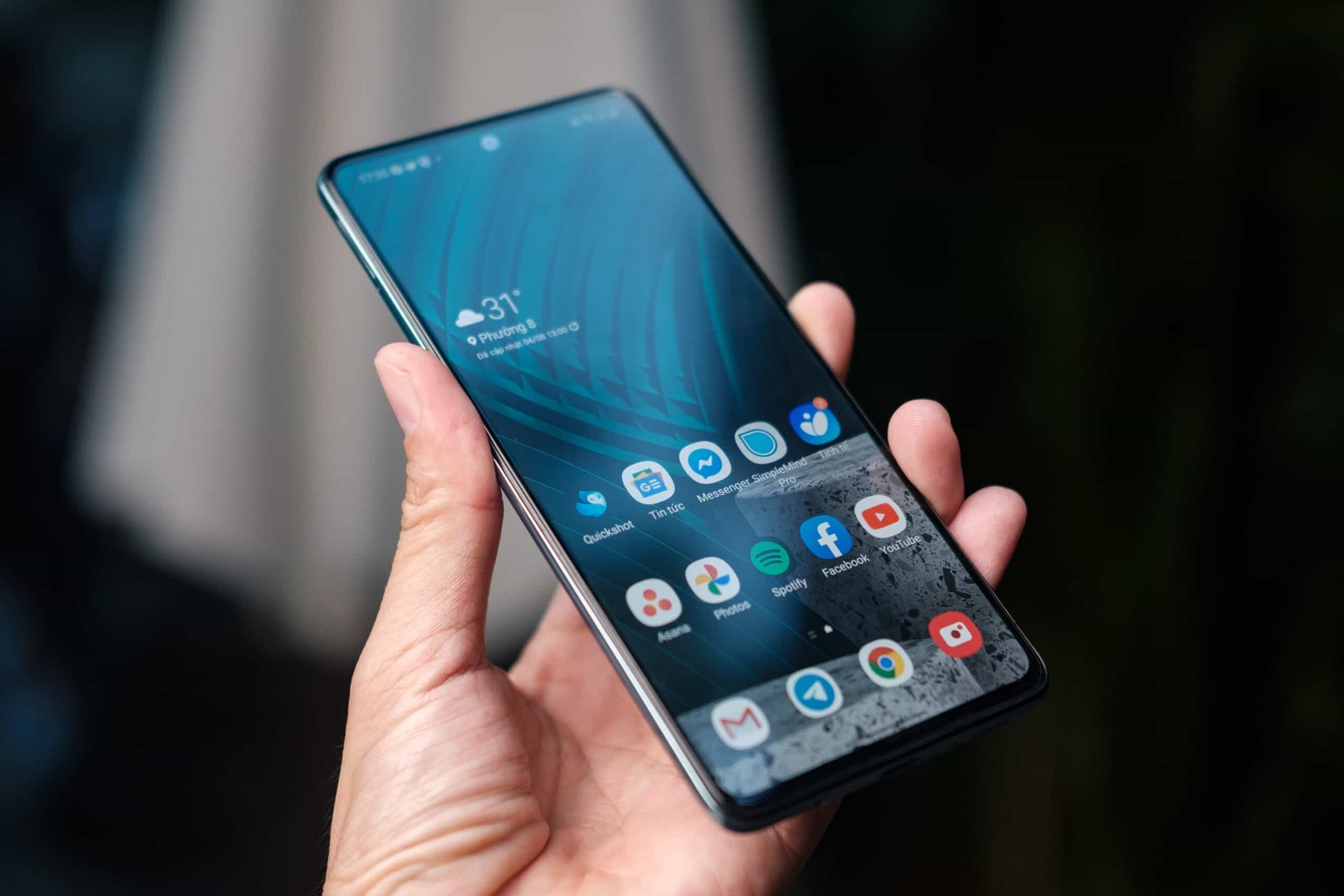The old-school style of JRPGs is fading now, with some people even saying that it’s dead and gone. However, some crave for that old turn-based gameplay, the grind of leveling, and just the feel of the game itself. That’s where Bravely Default 2 comes in. It’s a scratch on that ever-encroaching itch to JRPG fans that missed the old days. And for the people new to the series or genre, it’s a look into how RPGs were back then.
What Is Bravely Default 2?
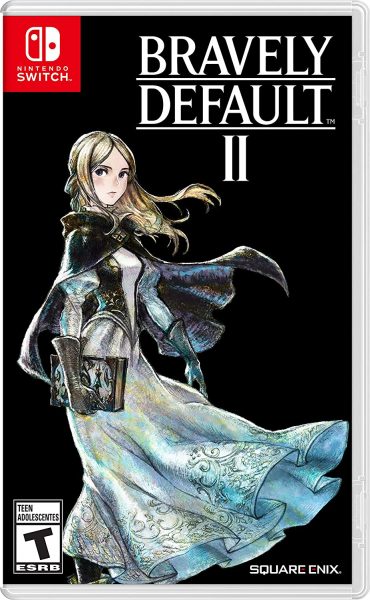

Bravely Default II is the third game of the Bravely Series created by Claytechworks and published by Square Enix and Nintendo in Japan and the West respectively. It follows the original Bravely Default and the game’s direct sequel, Bravely Second: End Layer. The game is available on the Nintendo Switch and was released on February 26, 2021.
Check out Bravely Default 2 on Amazon today!
Bravely Default 2 Gameplay Review
Now that we know the general stuff surrounding Bravely Default 2, let’s talk a bit in-depth about the game, shall we?
Gameplay, Combat, and Controls
Bravely Default 2 is pretty much the typical JRPG. Expect turn-based gameplay, combat, and controls, as well as an overall vibe that’s innate in the genre. You’re not here to blaze a trail and play the best video game ever; you’re here because you want to feel nostalgia. That nostalgic JRPG feel is pretty much everywhere on Bravely Default 2, and it is one of the things that draw fans of the OG Final Fantasy games to trying it out.
As already stated, combat is composed of turn-based actions with special commands thrown in. You can wait out for your character’s turn then attack or heal depending on what the situation dictates. However, one thing that differentiates this game is the triumphant return of the Brave and Default systems that they implemented way back in the series.
The Default system allows your characters to store up to three Brave points, and you get one every time you end that character’s turn. Meanwhile, the Brave System will allow you to spend Brave points to do more actions in one turn. Combining the Brave and Default systems is essential to your party’s victory. However, make sure that you use them in a manner that allows you to still act.
Using the Brave system while you don’t have any Brave Points will put you in the negatives, up to -3. If that happens, that character won’t be able to act for up to 3 turns, leaving them vulnerable to counters. However, if you have up to three Brave Points banked due to the Default system, you can use the Brave system’s max and still be able to act the next turn. This push-and-pull is a good addition to the combat style, and it adds a lot of depth to the turn-based gameplay.
Reduced Grinding
Now one thing that would turn off people from the RPG formula would be the grind, one of the more encompassing things about the genre. The grind is the player repeatedly going through battles for experience points and resources to make their characters stronger. If you’re stuck on a hard boss, chances are you’re under-leveled/underequipped and you need to grind a bit. However, this grind can be mitigated thanks to some quality-of-life changes.
One of these QoL changes would be the fact that you can now automatically fight enemies. Just leave the Switch running, go to a dungeon or area with monsters, and activate it. Your characters will automatically run around the area, fight monsters, and kill them. You can then get that sweet, sweet, loot, and EXP for your use later. This, alongside another QoL change that lets you speed up fights 4x, means you can grind the things you need quickly and with less time.
Character Classes, Jobs, and Skills
The series has something called the Job system. Jobs are classes that characters can equip. Through it, they will be able to use the abilities of the class in question. Each of the game’s four main characters can use a main Job and Sub-Job at the same time.
To get new jobs, players need to collect Asterisks. You can obtain them by going through the Main Story or defeating bosses in certain side quests. Characters in the game gain mastery over their Main Job the more they fight enemies using it. Leveling up a job allows the character to learn more support abilities, get enhanced stats when using the class, and gain new command abilities.
One thing that you need to take into account is that only the Main Job gets Job EXP. The Sub-Job allows you to use the job’s abilities. However, you can’t level up the job in question. Always ensure that you level up your character’s classes. Don’t just jump from one class to another when you get one. Since you can still equip a maxed-out class into a sub-job, you can still use that class’s abilities even when you’re leveling a new class.
To help you with what each job can do, here is a list of the jobs available on Bravely Default 2:
Freelancer
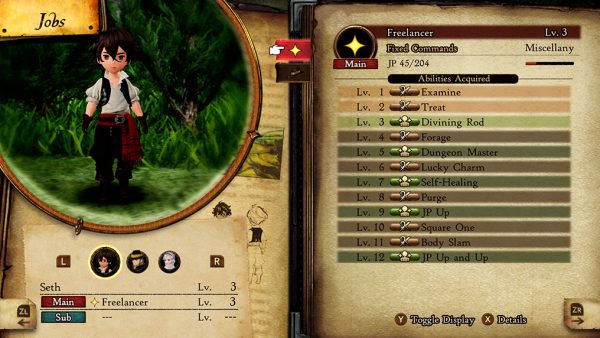

A Freelancer is the first class that you can get on the game and is surprisingly versatile for a starting class. The stats that Freelancer has are pretty balanced. Players might even want to put it as a character’s subclass when leveling up a new job due to the JP Up Support skill. A good strategy would be to power level one character up to max out a new job before swapping to another one. Other than that, only the grind will stop you from reaching new heights. Since that can even be mitigated due to the quality-of-life changes we talked about, what’s stopping you from maxing this job?
Black Mage
Of course, an RPG without a Black Mage can’t be called an RPG. The Black Mage job is focused on black magic, AKA offensive magic used to hurt and kill enemies. After you level up the job at a high enough level, players can unlock several powerful Spells like Firaga, an ability that allows characters equipped with the class to turn enemies into charcoal.
White Mage
Another one of the old but gold job classes, the White Mage job is the one you go for if you’re looking for healing and removing debuffs. There’s an adage that says, “Don’t mess with the White Mage,” and that’s pretty much the truth as they’re the ones that keep the party alive. They’re a necessary part of any party composition. After all, you can’t win fights if your whole party’s dead.
Monk
The Monk class is pretty self-explanatory. A bare-fisted fighter that can dish out high DPS, the Monk is one of your primary damage dealers. As one of the player’s first (and best) Jobs, having a max-leveled Monk in your party is a pretty good crutch in the early game. They deal enormous damage in a short time. They focus on raw damage, and their passives make sure every hit is powerful.
Vanguard
Vanguards are the base Knight class of Bravely Default 2. They’re all about being a strong powerhouse of a character. They can deal out big damage in the early game as well as tank hits that a squishy character can’t. Their abilities help in this, with some allowing them to cover for the squishy ones before immediately attacking.
Thief
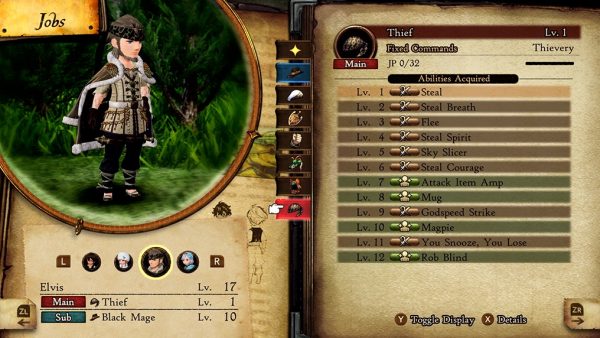

Now, you can’t have an RPG game without a Thief. They’re pretty much mainstays of the genre for a very good reason. In Bravely Default 2, though, this classic Job is incredibly viable due to the things that they can do, and they will remain viable even in the late game.
Thieves, of course, can steal items from any enemy you encounter in the game. However, the job also has some pretty nutty speed-based attacks which can be pretty deadly in the right circumstances. Also, if they find themselves drained of their MP, they can immediately steal it back.
Bard
The Bard is the first support Job that gives buffs to your characters. They do this with the Singing command, where they can temporarily increase the stats of the entire party as well as reduce the stats of their enemies in battle. Want to have a better defense? Get a bard. Want your DPS characters to crit and hit harder? Get a Bard. Want music during your journeys? Get a Bard. Bards are great.
Beastmaster
Now, the Beastmaster allows the character to tame monsters, Pokemon-style. You need to lower a monster’s HP before you can capture it. If you do manage to capture a monster, you can then use said monster to attack or debuff foes as well as buff your characters. Each monster in the game has a special skill. These skills can range from damaging enemies to debuffs. The class also has passives that are great for boosting physical and magic-based builds. This allows players to increase the character equipping the class’s damage output and MP conservation.
Gambler
If you want to put yourself to the whims of the RNG gods, you might want to go for the Gambler. This class makes the character be a living roulette. You can do some pretty nutty things with the Gambler class. For one, you can either hit your enemies with incredibly debilitating debuffs or with damaging spells. Regardless of how your luck plays out, you’re still gonna have a good time. Another thing to take into account when using a Gambler? Well, you’ll get more money. You might want to equip the job if you’re going for a money grind.
Berserker
For those who want to deal as much damage as possible, they might want to take a closer look into the Berserker class. You can describe Berserkers as incredibly unfocues Monks. The Berserker class is pretty much pure offense In Job form. And through Savagery, a high-risk, high-reward playing style is revealed to players. They can inflict status effects like Berserk to themselves, all while increasing their damage. If you tailor your party good enough, a single Berserker can end encounters in a snap.
Red Mage
Red Mages, on the other hand, allows players to expand their spell repertoire. If a character’s already a White or Black Mage, consider putting levels on Red Mage to let them use either White or Black Magic. In addition to that, you can also get more abilities that allow the character to expand on their magical capabilities more. The class allows them to increase their elemental attack as well as become a great Nuker that can deal a lot of area-of-effect (AoE) damage.
Ranger
Wanna know why bows exist in the game? It’s because of the Rangers. Rangers are a slow burn class. However, those that commit to the class can get some pretty cool rewards from a maxed-out Ranger. All the enemies on Bravely Default 2 have a type based on their species. And depending on the skill, Rangers can deal incredibly high damage.
Dealing with a dragon? Not to worry, Rangers have skills that take advantage of the type. What about Beasts? Same thing. Humans? Please, they’re dead before they know it. A maxed-out Ranger is what you can call a nuke for specific enemy types. Rangers are an incredible annoyance to enemies due to their high DPS.
Shield Master
Shield Masters is exactly what it says on the tin. A Knight-type job that allows characters to defend the weaker ones and let them do their thing. A single Shield Master can do some pretty nutty defenses that help the party survive the battle. And if the Shield Master is built right, they can be the difference between a victory and a party wipe. Their defense is high, which helps in that regard, and they’re pretty much the masters of hunkering down. Want a reliable class to help your squishy characters? Get a Shield Master. You won’t regret it.
Pictomancer
We’re now getting into one of the newer classes. Pictomancers paint enemies with debuffs. Yep, you heard right. You can debuff your enemies by painting on them. How that works, we have no idea. But if you want enemies to die quickly, try pairing the Pictomancer class with the Bard class and watch as enemies get debuffed to the ground while your characters are swimming in buffs.
Dragoon
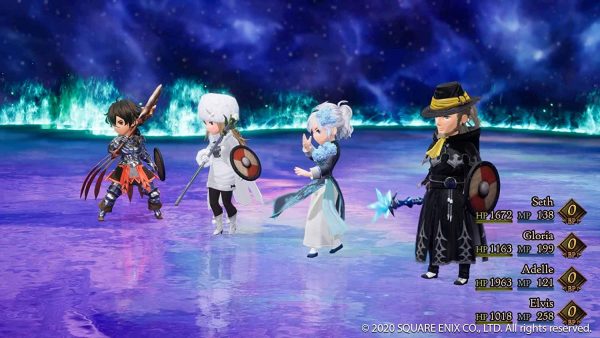

Let’s look at yet another classic Final Fantasy class, the Dragoon. For those not in the know, Dragoons are a DPS class with a built-in “Get Out of Jail Free” card. Their Jump ability is pretty nuts for escaping certain abilities in-game. See that enemy? It’s casting a dangerous ability, right? Maybe that ability will wipe out the whole party! Well, that ability isn’t going to hit anything. Use the Draconics command to Jump the entire party and watch as the enemy sobs in frustration for not hitting you. After that, your whole party will land back down in a plunging attack, dealing damage. It helps that the class is incredibly balanced, with great DPS and decent stats.
Swordmaster
For those who like swords and hitting stuff hard in general, then they might want to try out Swordmasters. The class is Nioh in Turn-Based RPG form. The Sword Crafting Command allows the Sword Master to change stances, which changes how Swordmasters approach a battle. Want to attack twice in one turn? You can do that. Want to parry and counter? You can also do that. You can either do an attack! Attack! Attack! Swordmaster, or a Counter Swordmaster. You can choose how to build your ideal Swordmaster. Also, if a character’s not using a weapon on their other hand, they can Two-Hand a weapon for more damage. This, alongside the Stances, makes Swordmasters one of the greater DPS dealers in the game.
Spirit Master
A Spirit Master is a White Mage taken to the ultimate conclusion. It’s the greatest healing support class in the game, and it’s one class you really shouldn’t overlook. Combine this with a White Mage and you’re pretty much never dying in the latter parts of the game. They do this by summoning certain spirits to heal and buff the party. Get the class at a high enough level, and you can cast Holy, one of the best Light-based damage spells in the entire game that can nuke undead monsters. Getting one maxed out for your party is a must.
Salve-Maker
Salve-Makers are another buffing-oriented class. They mix two items to form an item that can buff their allies. Want a buff that mixes an attack buff and a critical hit chance buff? If you have the right items, a Salve-Maker can do it in the middle of a battle and then apply it to your party. It’s a niche buffer class, but it’s one that can turn the tide of battle through the power of money. Use this class only when you have the money to buy the necessary items. You’re gonna need a lot of cash for this one.
Oracle
Yet another buff/debuff class, the Oracle is pretty much a slow burn until it reveals its true power. Oracles are the game’s iteration of the venerable Time Mage from Final Fantasy. And if you’re one of the people that invests in it, this job an incredibly deadly tool to your character’s arsenal.
Through the use of Divination, your character can speed up allies, slow enemies down to a near standstill to allow your characters to act, and pretty much nullify magical attacks if you’re buffed up enough. However, their main use is to pretty much invalidate the negative consequences of the Brave System. If your unit’s on a -3 on their Brave Counter, an Oracle can boost it so that they can act the next turn. They’re quite handy if you’re in the middle of an annoying fight.
Bastion
Bastions, on the other hand, are Shield Masters taken to their logical conclusion. Any party with a Bastion is immediately going to enjoy defensive buffs out the wazoo that allows them to nullify any attack in the game. A properly set up Bastion can be an incredible bulwark against terrifying enemies, and you can expect the class to deliver the moment you unlock it.
Phantom
Yet another class that takes an existing class to their logical conclusion. Phantoms are Thieves with more DPS, better speed, and better critical hit chance. However, it’s usually best to get the class to the max then put it as a Sub-Job with Thief as the Main Job. This is because Thieves are the only class in the game that has the Steal command. If you’re a filthy degenerate that steals items from enemies but wants the damage potential, go for that Job build and watch as they turn enemies into salami. Combine that with their ability to dual wield, and see enemies turn into dust.
Arcanist
For those that want to become a Berserker but still throw magic attacks around, the Arcanist might be a job for them. It takes the high-risk, high-reward playstyle of your usual Berserker and allows them to use magic while sacrificing physical damage.
The class uses the power of Darkness through the use of the Necromancy command, allowing them to sling out powerful spells but draining HP from themselves and others. This is why some care needs to be taken into account when using an Arcanist class. Maybe pair that character with a Spirit Master to hedge your bets. Also, having a Black Mage as a Sub-Job helps the Arcanist as well, so you might want to try it out.
Hellblade
Remember the Black Knight Class? Well, the Hellblade is that. They sacrifice HP to deal enormous damage, and this is the class for those that want to live dangerously in the late game. It also helps that they’re the only class that has access to attacks with all of the elements in the game. They’re pretty much a Swiss Army Knife in terms of utility. For those that keep a Hellblade at a low-enough HP, expect damage to skyrocket so high that it exceeds the usual 9999 damage limit.
Bravebearer
The Bravebearer class is the strongest Job class in the game. No question. However, you easily acquire the class. Moreover, telling you guys how to get it is pretty much spoiler territory. Just know that unlocking this class is needed if you want to get the game’s true end. That, and unlock ultimate power in the process.
Graphics
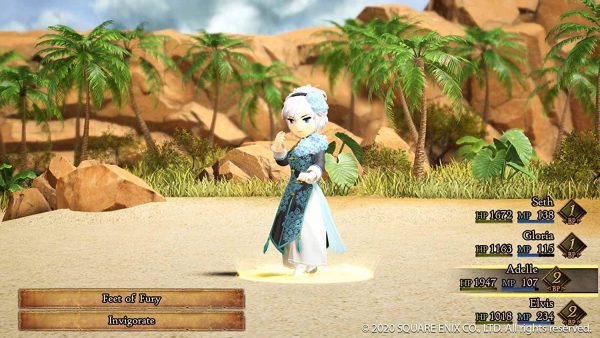

The Bravely Default series is one that always has a unique look. The background looks like an incredibly painted world while the tiny characters scurry about it. They’re pretty much what you can expect from a developer that knows their audience very well. They went for an RPG aesthetic and they nailed it, graphics-wise.
Character designs are also pretty improved, but you can’t notice that much when you’re looking at the gorgeous watercolor. So we’ll let that pass for a bit.
World and Story
Bravely Default II places the player on the boots of a sailor by the name of Seth. Seth has washed ashore on Excillant after a rough storm hits his ship. While drowning, Seth finds himself touched by a greater power. The four elemental crystals in the world were stolen, which created the storm that destroyed the ship Seth was on and almost drowned him as a result. Due to this, and with some convincing from Gloria, the Princess of the Kingdom of Musa, he proceeds to go on a journey to retrieve the four crystals.
Seth and Gloria are joined by two other characters: Elvis, a traveling scholar who wants to decode a book his master left behind, and Adelle, a wandering mercenary who’s looking for her lost sister. The game also has a few guest characters that join the party temporarily to help you on quests. However, the four characters we’ve mentioned are the ones that the player will be using throughout the game.
Story-wise, there’s not much to say. Evil’s afoot, you’re slated to stop them, yadda, yadda, yadda. The story is atypical for an RPG and one that we’ve seen many times before. However, the graphics as well as nostalgia help keep it interesting for the players. It also helps that the game throws a few curveballs along the way.
Is Bravely Default 2 a Good Classic RPG?
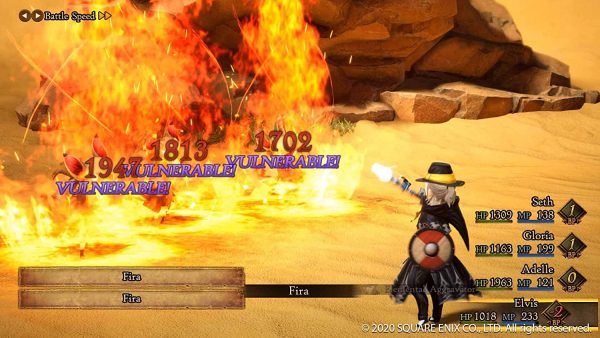

Overall, Bravely Default 2 is one of the best classic RPGs out there that you can sink your teeth into. The character customization is superb, the soundtrack is awesome, and the graphics are great (well, except for the character sprites in some aspects). However, the game leveraged the capabilities of the Nintendo Switch to its fullest potential, allowing players to experience the game to the fullest.
Bravely Default 2 Compared to Octopath Traveler
Looking at both Octopath Traveler and Bravely Default 2, you can pretty much see similarities galore between the two of them. And you won’t be wrong in saying that both games are what classic JRPGs should look like. From great graphics to cute sprites and the typical story, both games are rife with that and more.
However, when choosing between the two of them, you can’t do that without invalidating the other. Bravely Default 2’s Job mechanics allows it incredible depth. Meanwhile, Octopath Traveler’s storylines are the epitome of RPG writing. Overall, both games have their strengths and weaknesses, and it’s pretty much a recommendation to have both on the user’s Nintendo Switch so that they can play either one when the other’s done.







